I had arrived in the county of Wiltshire and secured lodgings at the Stonehenge B&B, after which I had my first encounter with the ancient monuments scattered across this land. Stonehenge had been an incredible experience, despite my surprise at not being permitted to approach the revered stone circle. Mick, the host at my lodgings, had recommended another henge at Avebury for the tactile experience which I craved.

Avebury was a 40 minute drive to the north along narrow roads, passing carefully through small villages until I reached the larger town of Devizes with its swans and infinity of roundabouts. Luckily the GPS on my phone kept me on the right track and I emerged unscathed from the labyrinth to complete my journey ten minutes later in the Avebury car park, where I was pleased to learn I could park for free due to the English Heritage sticker on my windscreen.
All that was left was a short walk down a narrow path into the village proper. First I passed the massive ditch and bank (ie. the actual henge) before coming to the arc of irregularly shaped stones that formed the inner circle. Being the largest stone circle in Europe at over a kilometre in circumference, it was impossible to view the entire structure at once.

I fully embraced the opportunity to actually touch the ancient monument, running my hands over the stones one by one. Oddly, I felt a strange tingling suggestion. Was I just being suggestible, or was I feeling some kind of primordial magic?
I followed the arc of stones until the path lead me across the ditch and up onto the bank, from which I had a better view back over the site.

I followed the bank around to the opposite side of the village straddling the henge and ended up back inside the ring along with a scattering of sheep. There were some other stones inside the circle near some houses, which I assumed must be part of one of the two smaller internal circles that had once formed part of the monument.
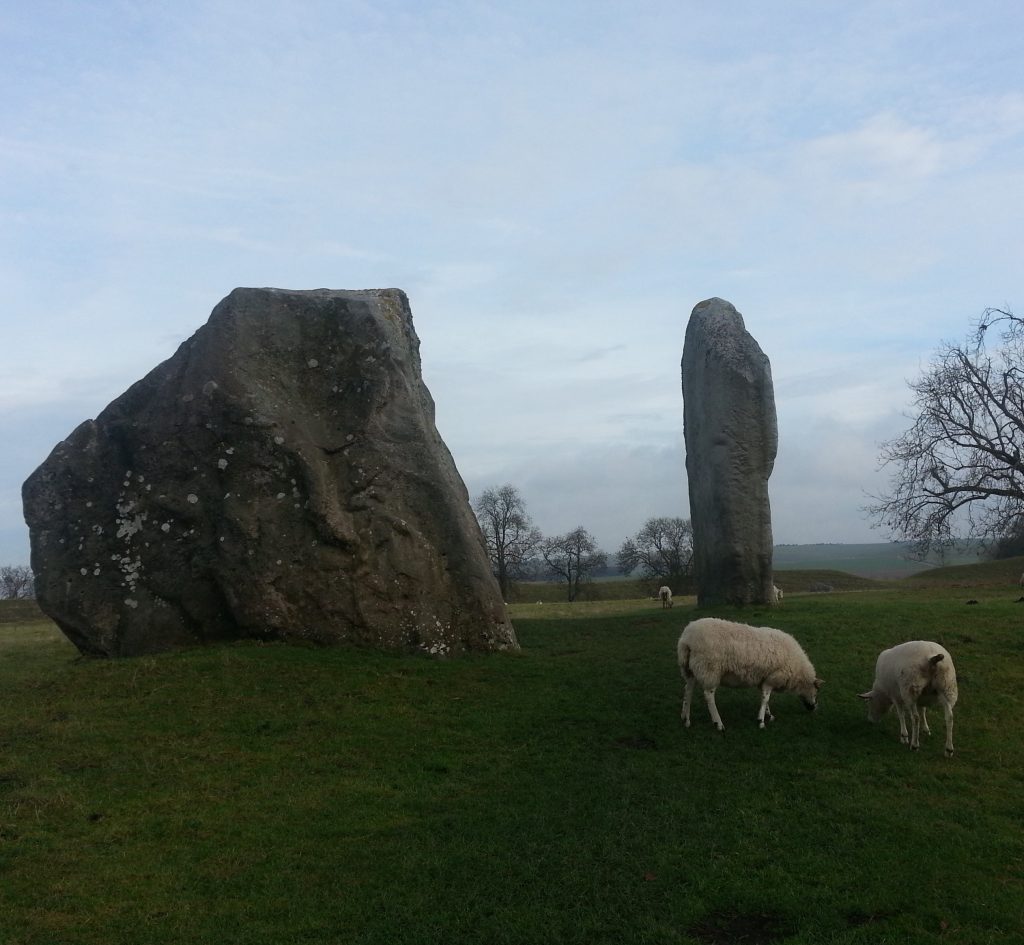
The purpose for which the henge was built in about 2870–2200BC is still a subject of debate, but by the medieval period it had come to be associated with the devil. That may explain why a concerted effort was made to topple and bury the stones, only ending when one fell and crushed a man. This convinced the locals to leave the monument alone until the 1700s, when religious fervour once again ignited a wave of destruction – this time with the great stones being shattered.
It was only the intervention of wealthy purchasers which prevented the site from being completely destroyed, and in the 1930s some of the stones were re-erected. After six hundred years entombed beneath a 13 ton stone, the man who had met his death during the medieval attack on the henge was finally unearthed. His stone is now known as the “Barber Stone”, as tools found on him indicate that he was likely to have been a travelling barber-surgeon.
I stopped in at the museum to enquire about walks around the wider landscape that forms part of the World Heritage Site along with the henge. They had the perfect solution, a three hour loop walk that would take me past several intriguing archaeological sites. As directed by the guide I was given, I headed over the bank and on to West Kennet Avenue, a causeway marked by two rows of stones that once connected the henge to “The Sanctuary”, another neolithic site 2.5 kilometres away.
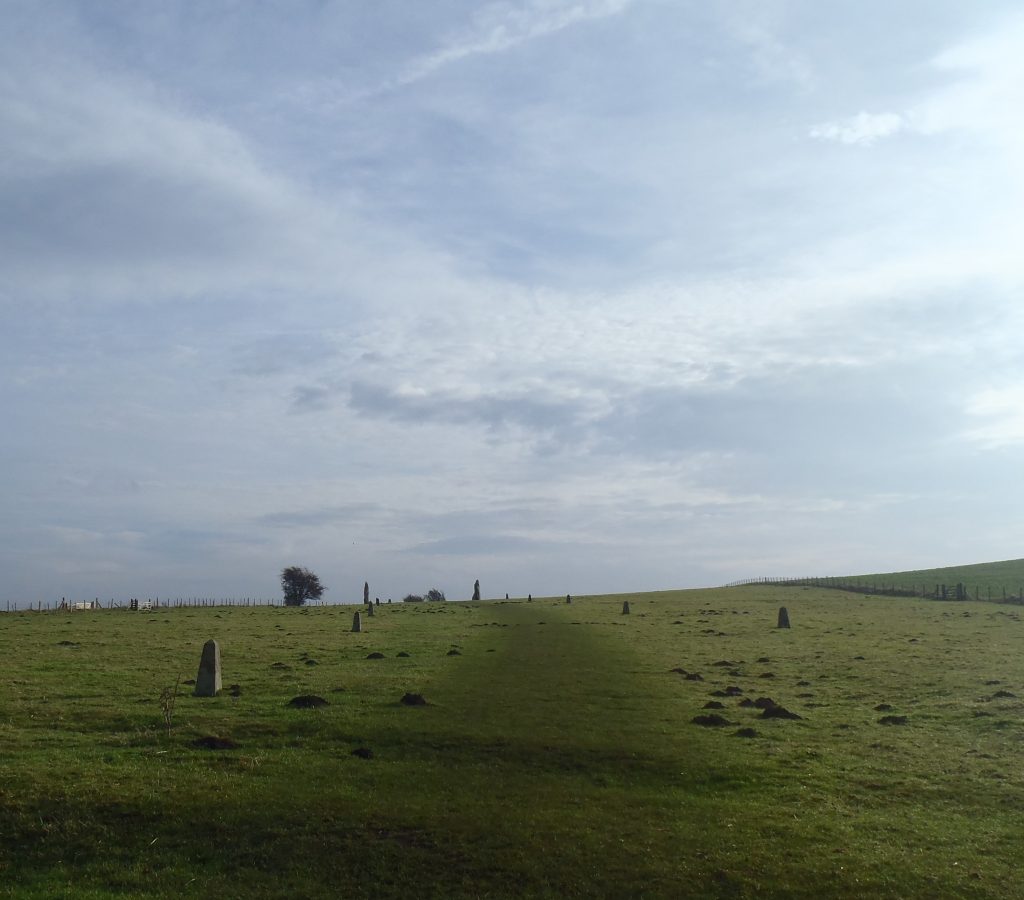
This portion of the trail was reconstructed by archaeologist Alexander Keiller in the 1930s, who placed the fallen stones back upright and installed markers where he found holes for stones that had been destroyed or removed. Meanwhile I’m amazed it is even possible to locate a 5000-year-old hole where something used to be.
One speculation about the purpose of this avenue, placed carefully amongst several important sites, is that it helped to emphasise the connections between these various places. This was curious to me, as the Arai te Uru myth of the Otago Maori performs a similar function.
I never would have thought to have found a connection to New Zealand here, but I suppose if you don’t have a map and you can’t write things down then you’ve gotta find some way to propagate knowledge about the lay of the land.
Reaching the end of the reconstructed part of the avenue, I was directed to cross the road and enter farm land. There was supposed to be a single stone sitting in a hedge somewhere, remnant of another stone circle, but I was distracted from my search by another exciting sight.
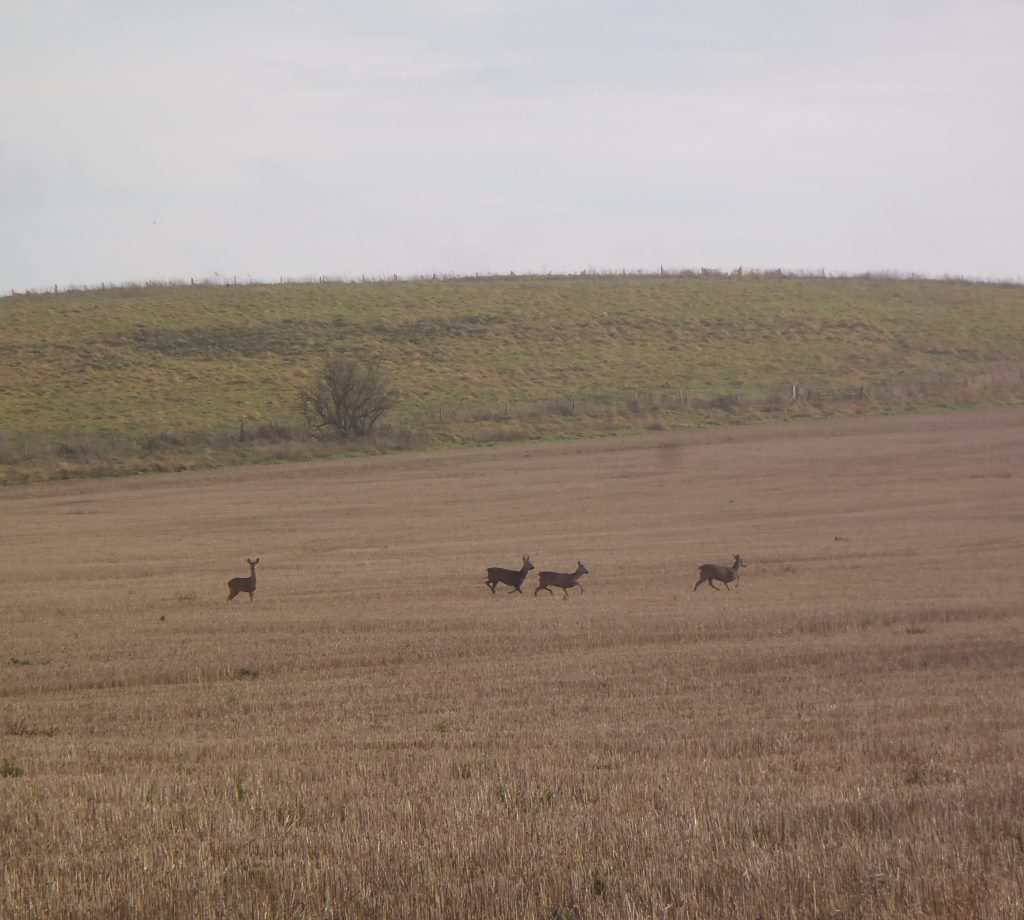
I’d found the first wild deer of my overseas sojourn, regarding me cautiously from the centre of the paddock to my right. Coming to the intersection at which I was to head up a slope towards the low ridge above me, I realised I must have missed my lone standing stone. But never mind, because my piece of paper says that from here I can see the top of the man-made Silbury Hill! I didn’t actually know where that was in relation to my position, and couldn’t see any hills nearby that looked particularly man-made. Strike two for this bumbling adventurer.
But at least the next point of interest was easy to find. Standing out proudly atop the ridge were “the hedgehogs”, an unassuming name for several 4200-year-old barrows upon which trees had been planted in the 1800s.
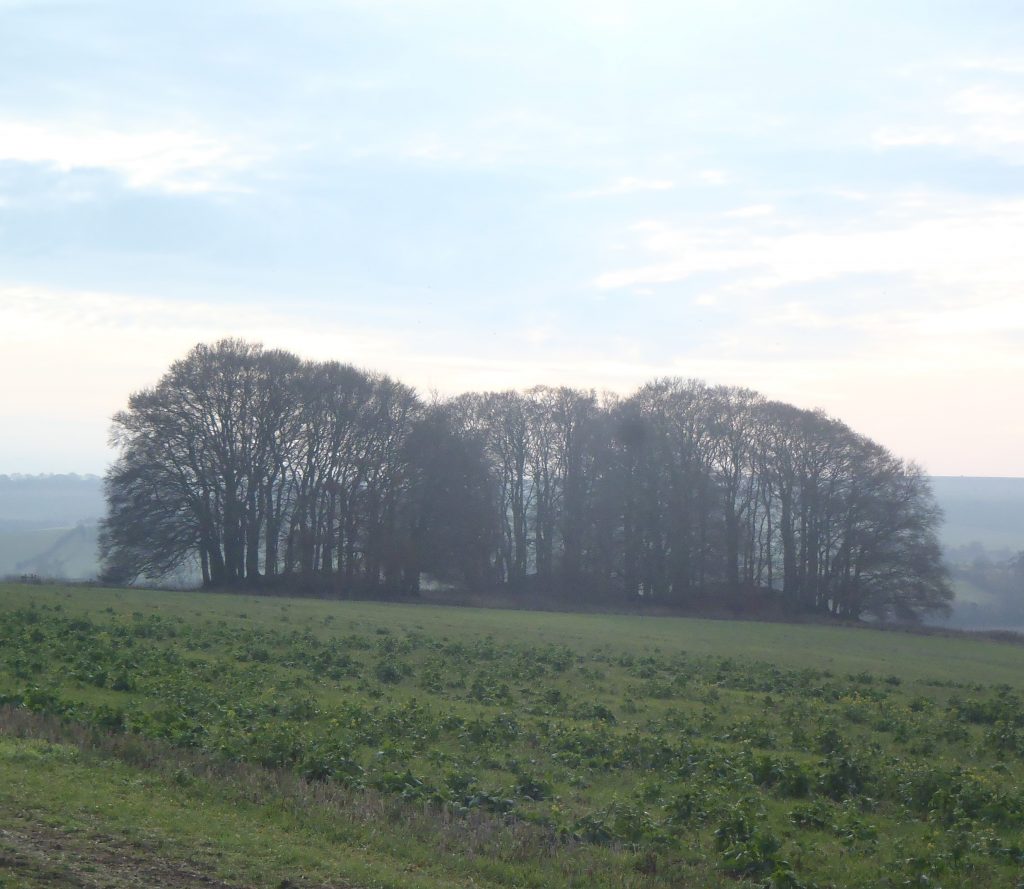
At the top of the ridge I took the recommended quick detour to the group of barrows, known as the Overton Hill barrow cemetery. My familiarity with barrows begins and ends with The Lord of the Rings, which my father read to me as a child, so I vaguely remember them as signifying a terrifyingly haunted area. However they appear to be all over the place in Wiltshire, causing no zombie-devouration to the locals.
Regardless, the cemetery did look like something out of The Lord of the Rings. The twisted naked branches of the barrow-trees clawed the sky above the mossy humps of the ancient burial mounds.
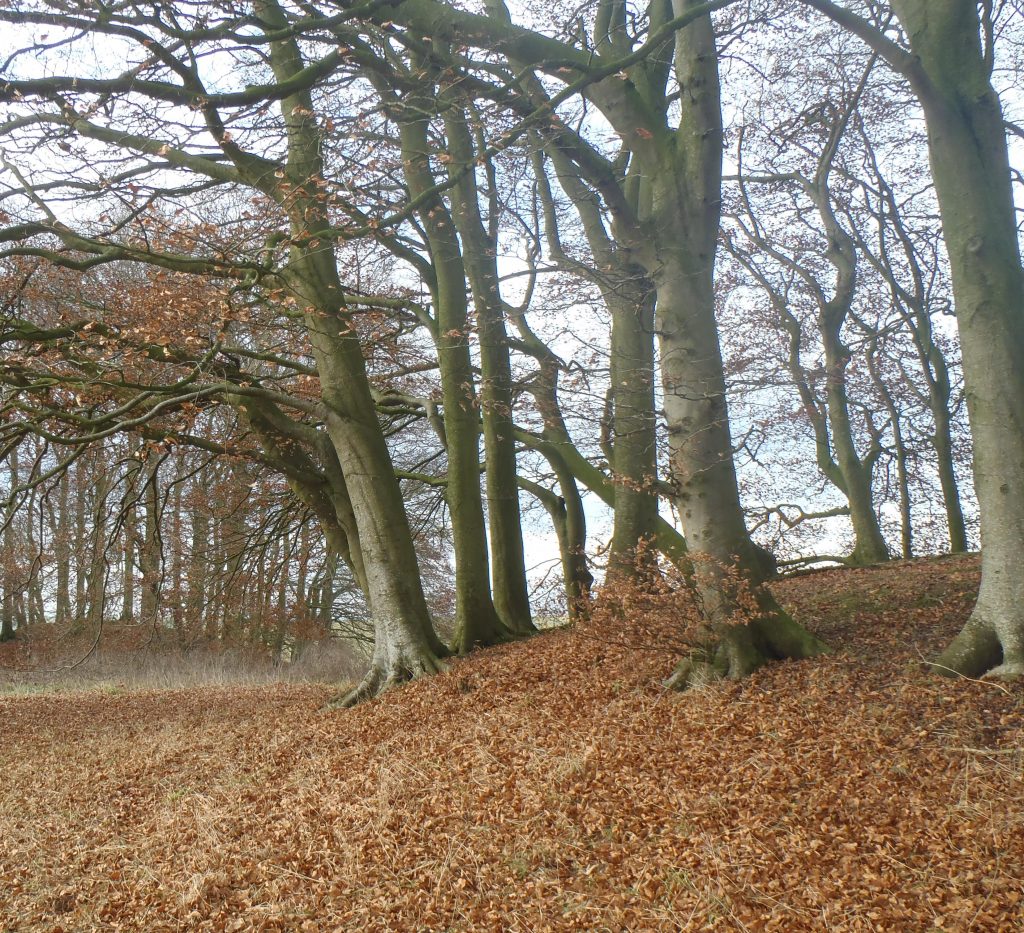
For some reason the authorities had deemed it necessary to add a sign admonishing visitors not to dig around the barrows, I guess because some people just want to be haunted?
After paying my respects to the ancient and hopefully not vengeful dead, I doubled back to make my way along the Ridgeway, itself a very old route though it was only officially laid out in the 1700s. I was supposed to follow it to Green Street, an old road into Avebury, so I set out with a vengeance along the rutted old track between paddocks.
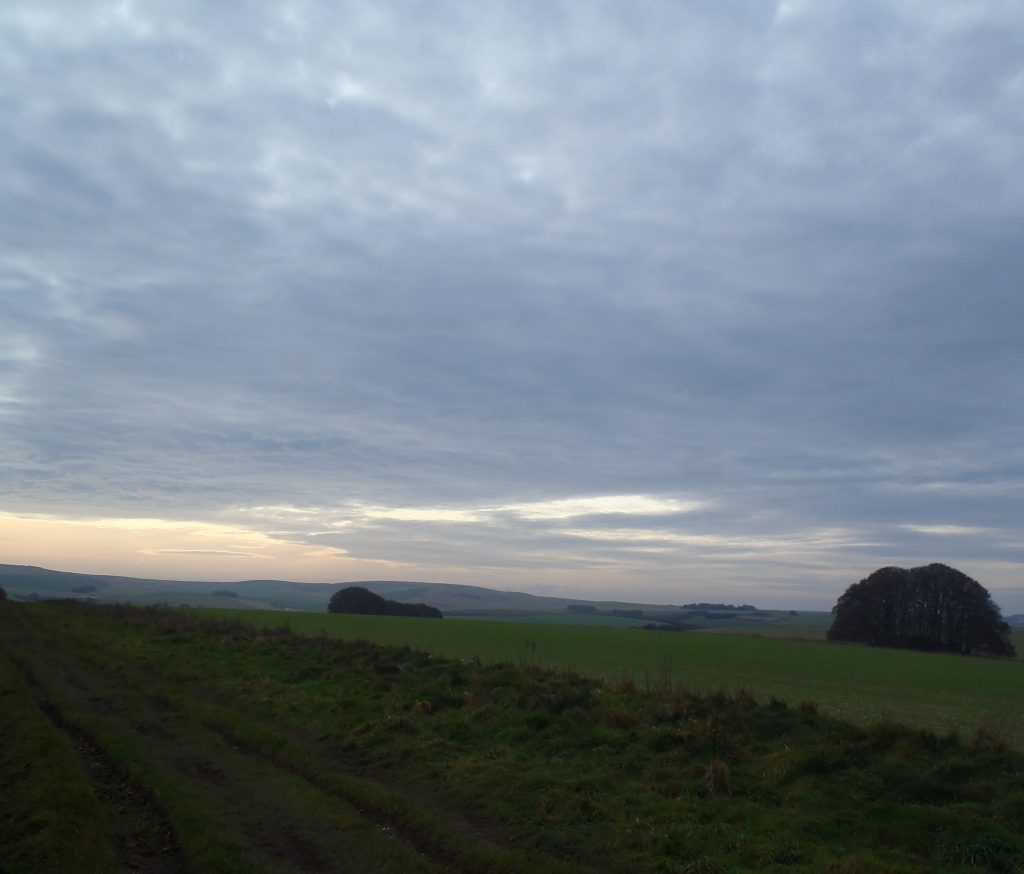
I power-walked along the ridge until my feet began to hurt, with no street in sight. This part of the walk was quite boring, I concluded, since I hadn’t even seen a barrow for at least half an hour. Sure, the Ridgeway is a historic route, but all I’m seeing right now is the same old pasture land that I’ve seen already on my long pilgrimage walks through Kent.
My only comfort was a bird of prey hovering overhead. I wasn’t quite sure what it was, but I chose to believe it was a hawk, my “spirit animal” and childhood obsession.
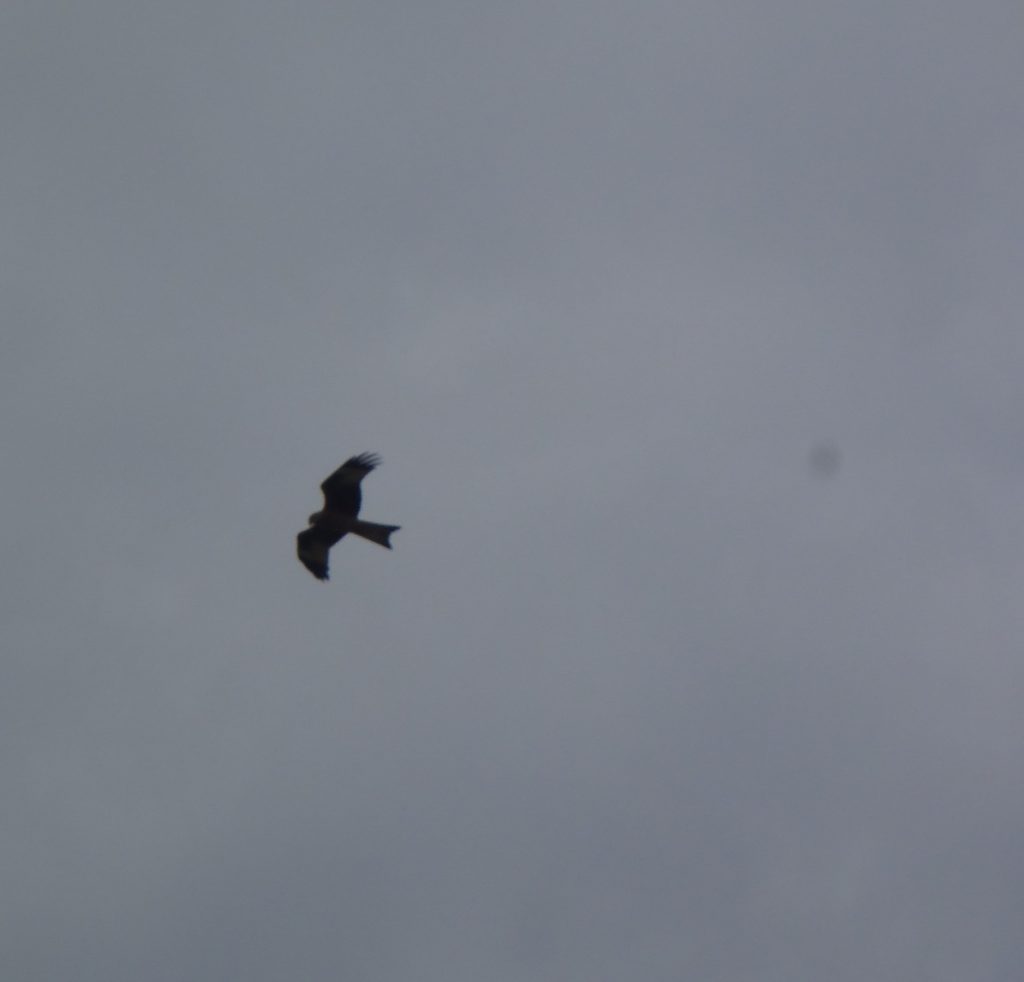
Even so, I was soon glaring at my guide, trying to figure out exactly how much further I had to go to reach this alleged street. I was almost too grumpy to investigate the fenced-off pond that the Ridgeway lead me past, but relented, to discover it was a rare dewpond. These are a traditional artificial pond which supplies a watering source to sheep and a valuable habitat to insect and plant life. They are disappearing these days, but this one has been maintained for its ecological value. Yet another example of how humans and nature have evolved to live in balance in this ancient land.
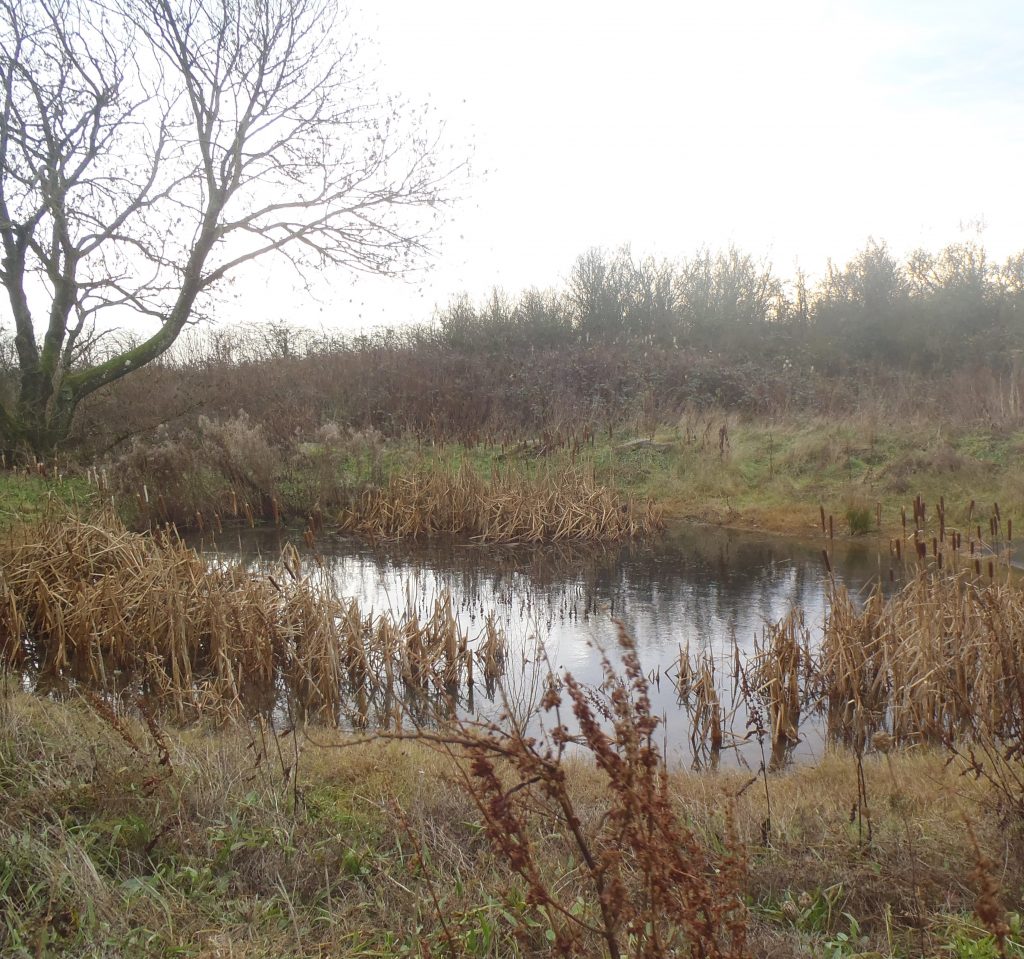
I forged on, until finally I reached a road. My salvation! As directed I followed a byway downhill, admiring the white horse carved into the chalk slope above me. If I had known beforehand about the Hackpen White Horse, I might have become concerned, but I simply photographed it and continued.
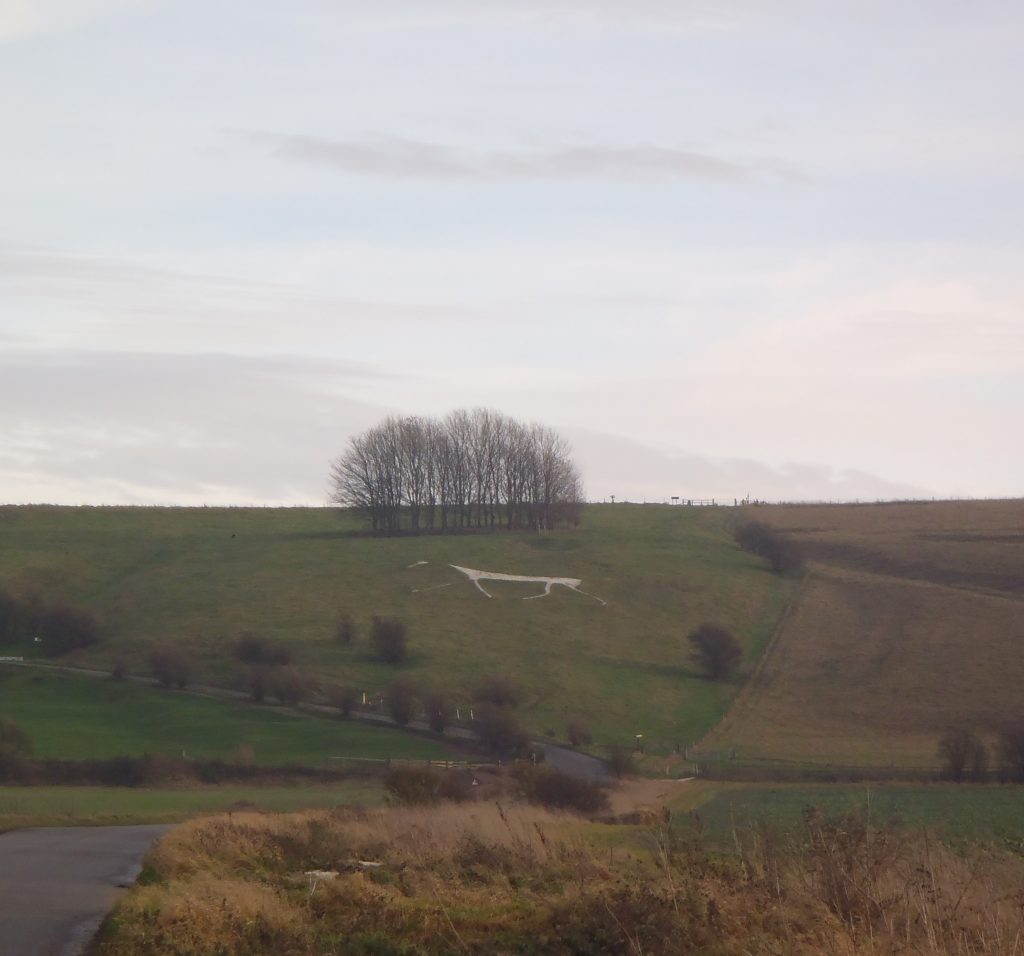
I headed down the road, expecting to end up back in Avebury, but instead found myself at a crossroads with signs only for Broad Hinton and Berwick Basset. So I decided it was about time to ask my GPS how to get back to where I’d started. Turns out I was 5 miles (or 8km) from where I was supposed to be. I’d apparently walked more than twice as far as I should have in search of the elusive Green Street, which I could only assume was not in fact a tar-sealed road as I had imagined.
It seemed my only option was to drag my aching bones back towards Avebury, so I set off down the road in the appropriate direction. Like many roads in England it was ill-suited for pedestrians, with no footpath and no curb to speak of. I had the choice between dangerously walking on the road or slogging through an uneven field. I was becoming more demoralised by the step!
Then I spotted my salvation in the form of an extremely dusty bus stop – and a bus was due in ten minutes. I tried to rest against the stop without actually touching it until the bus arrived and what would have been another hour (at least) of walking was trimmed down to a 10-minute ride.
Disembarking at Avebury, my only desire was for a meal and (non-alcoholic) drink from the Red Lion pub which sits almost in the centre of the stone circle. It was only once this was done that I felt ready to return to my vehicle for the drive back to my lodgings.
I entered the car park to discover it was empty of every vehicle except one – mine! That was when I recalled that the closing time for the parking lot was 4.30pm, and it was now 4.40. Woe is me! I began to run through my options before noticing the paper left on my windshield.
It was from National Trust. “You are not locked in,” It said. “Please close the gate after you.”
Never had I been more happy to receive an unsolicited notice on my windscreen. I gratefully left the park and made my way back to the lodge, only one question left in my mind. Stonehenge or Avebury, which henge is best?
References:
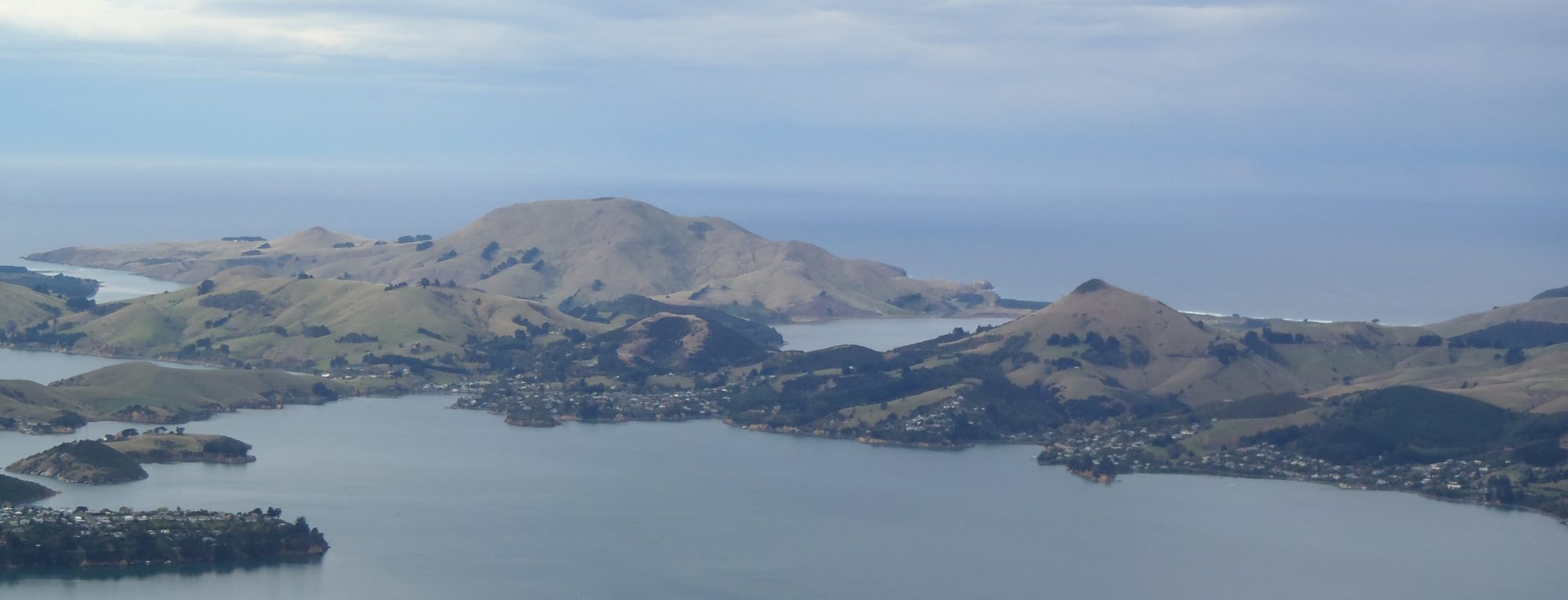



I liked the barrows!